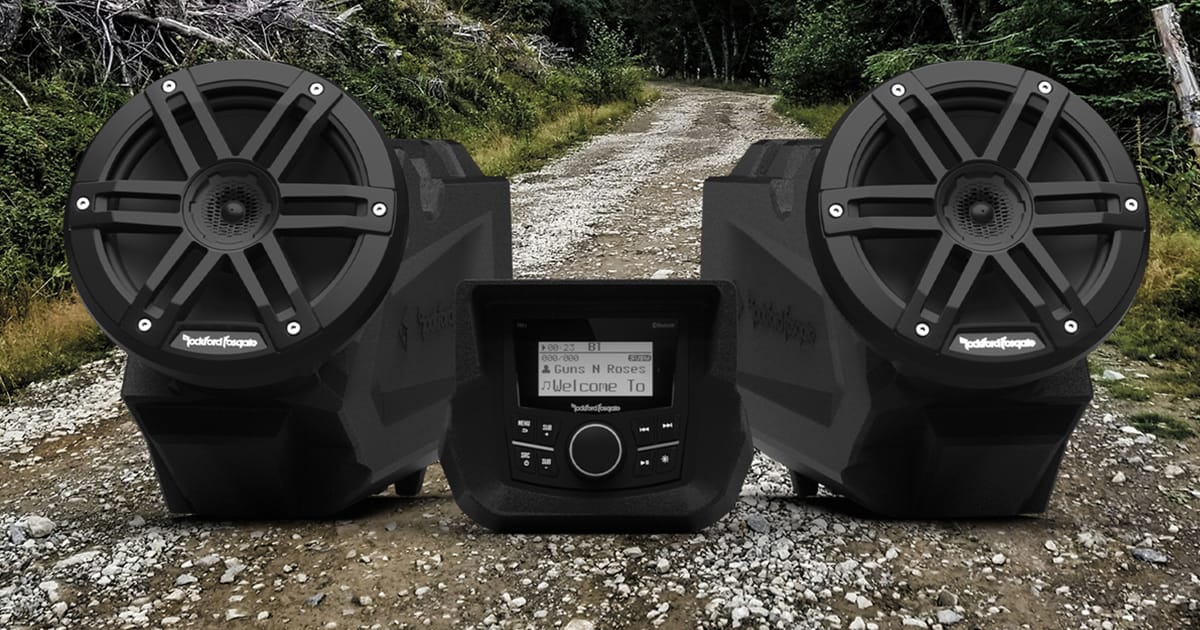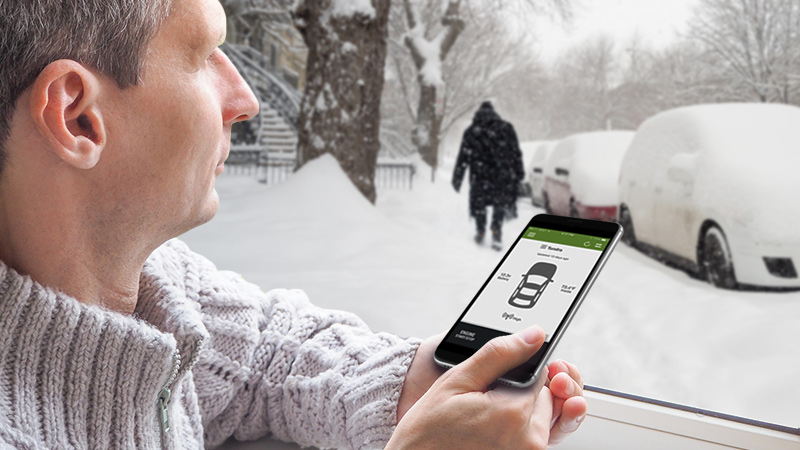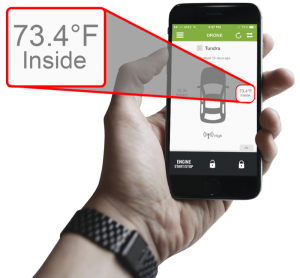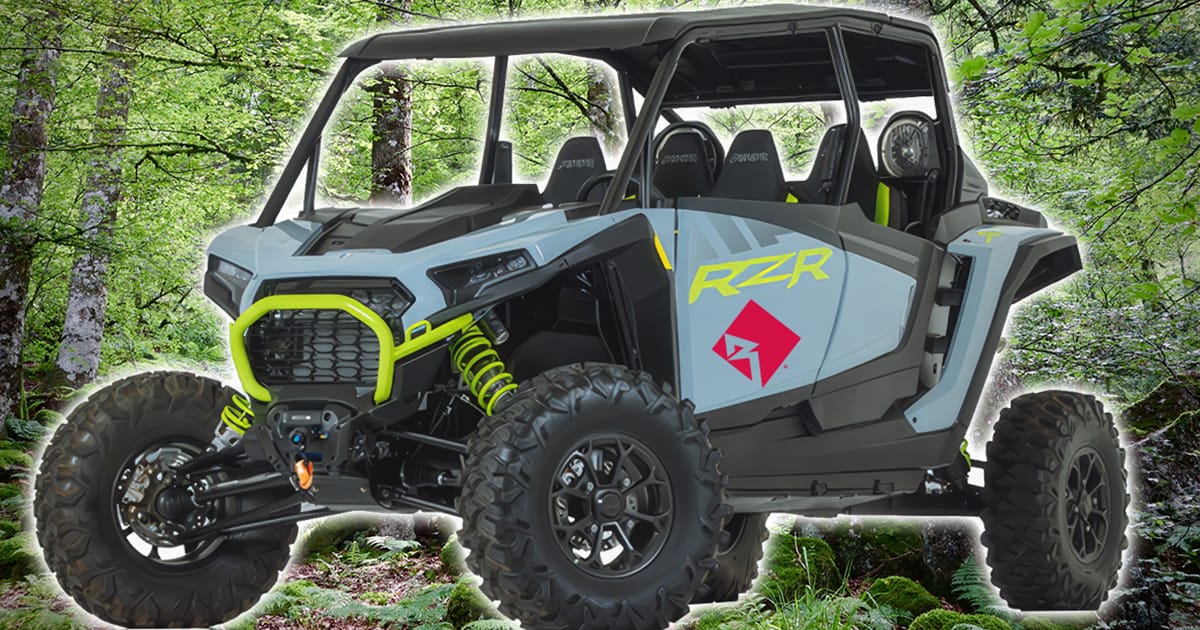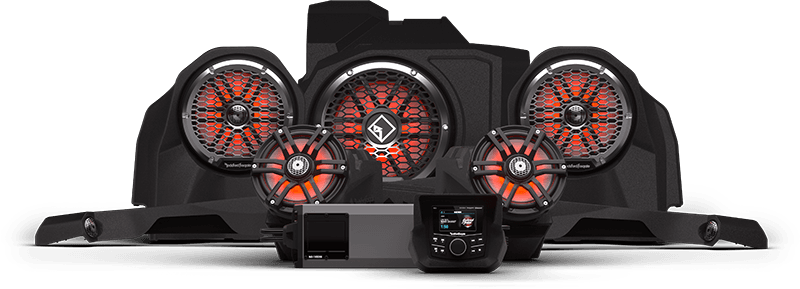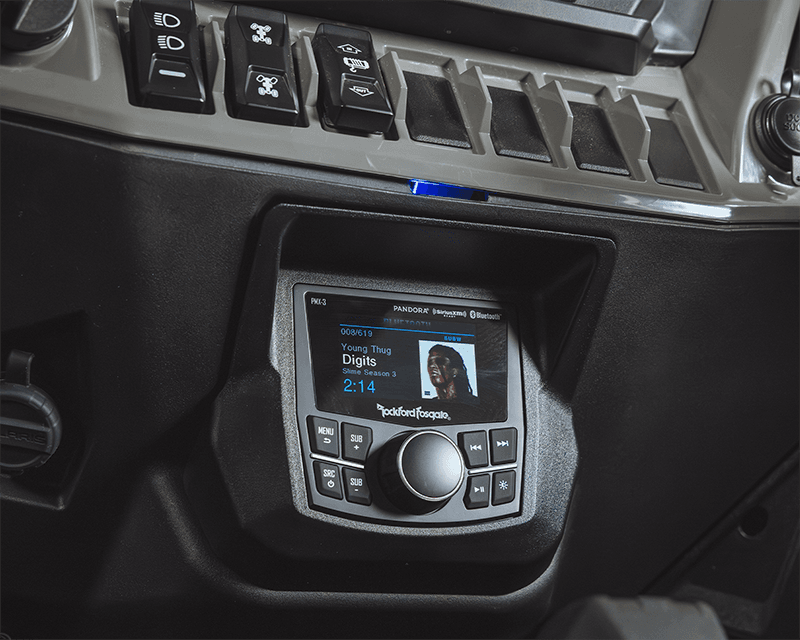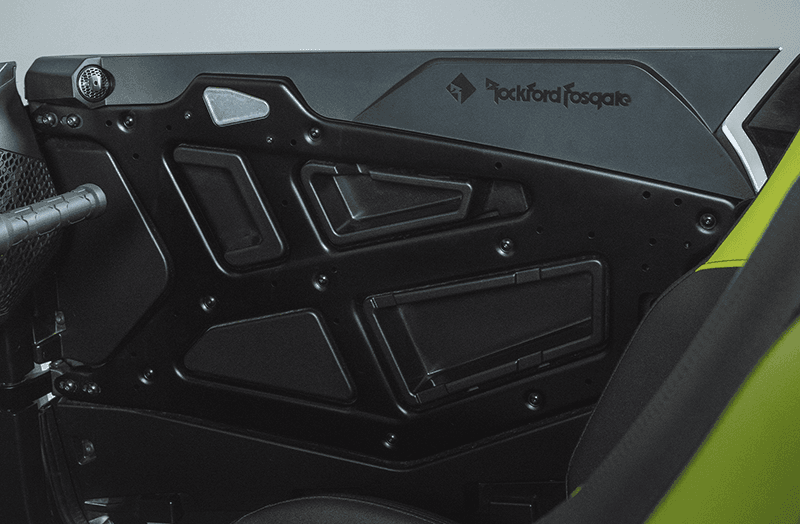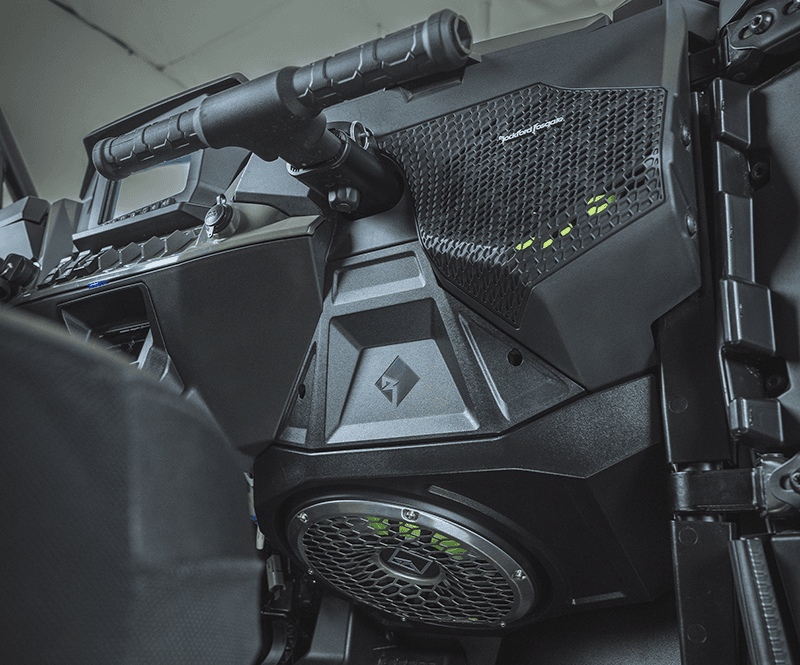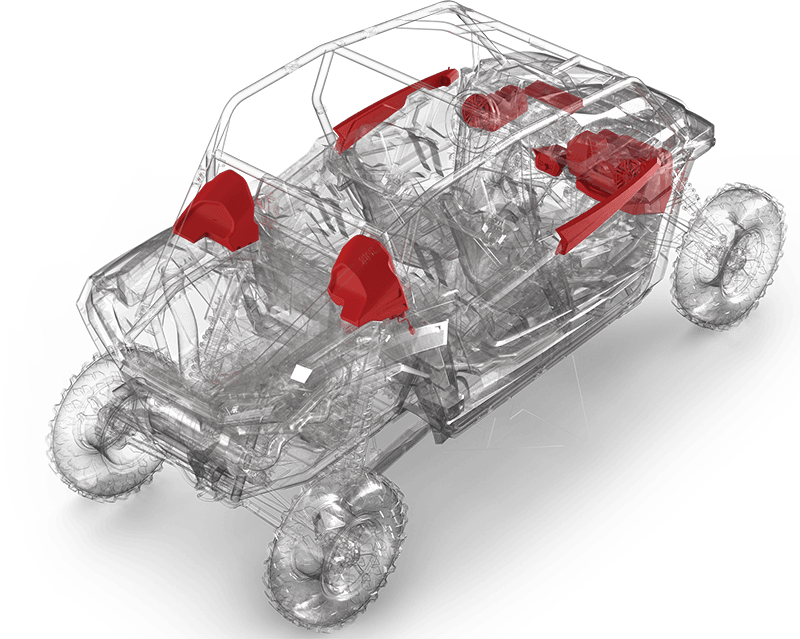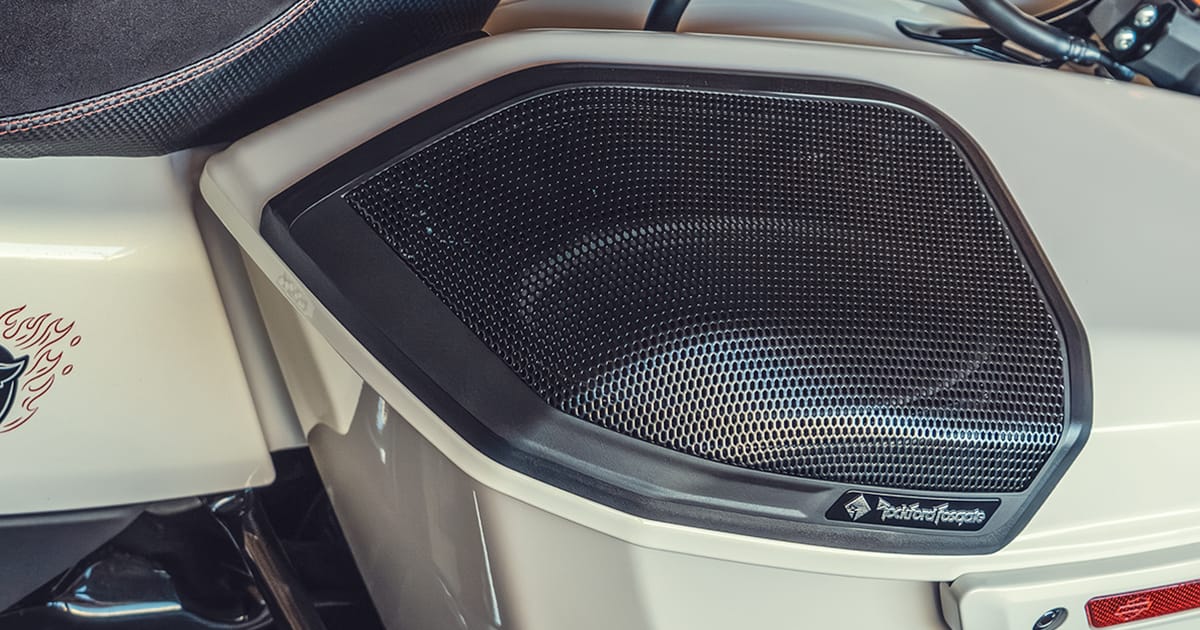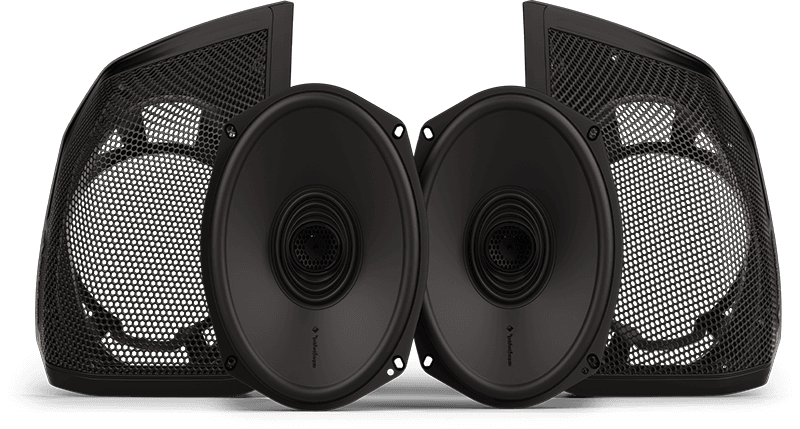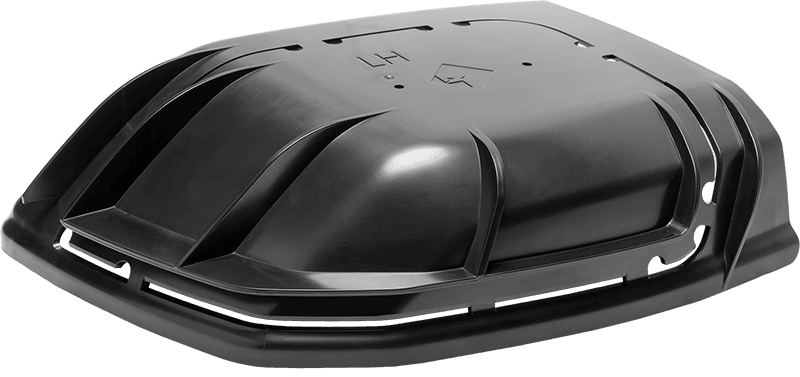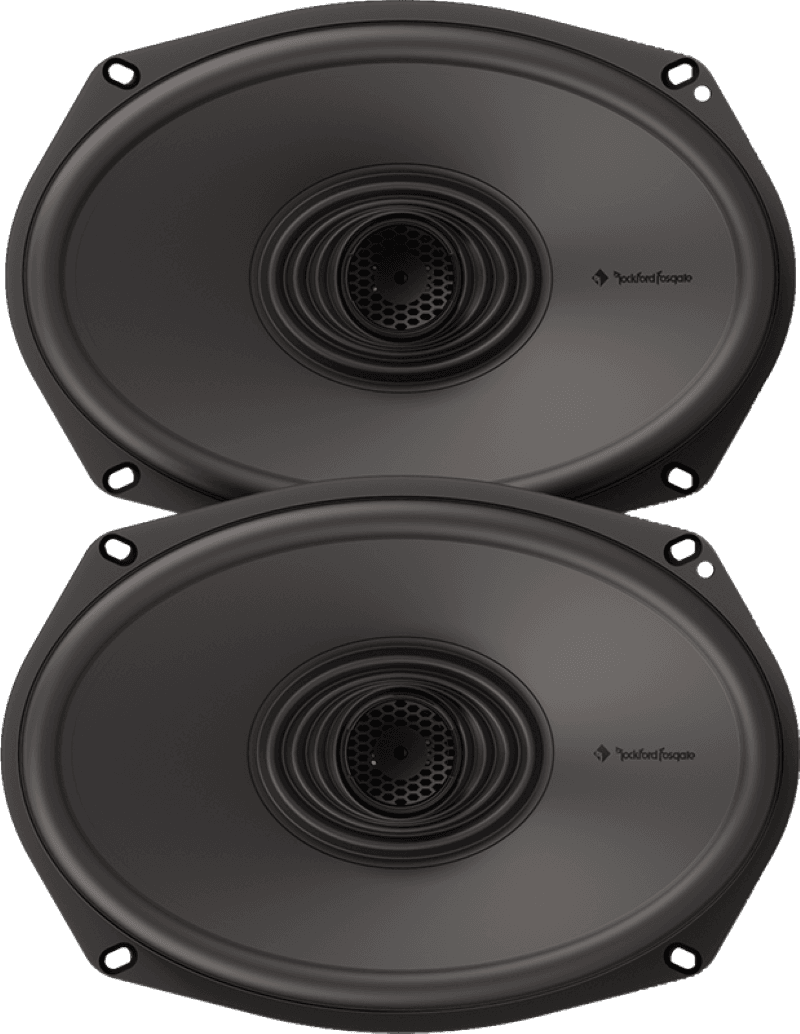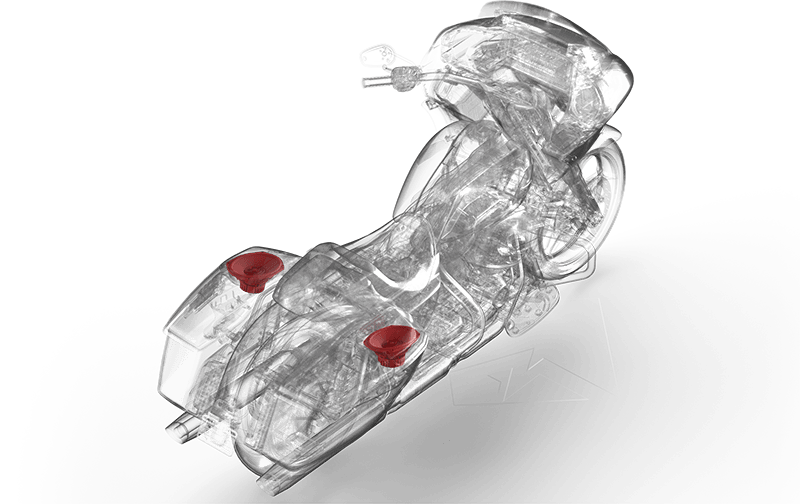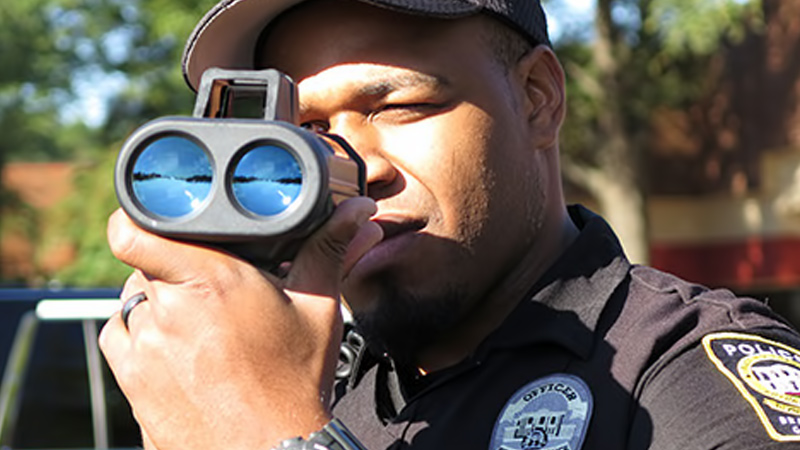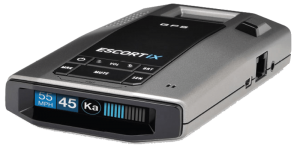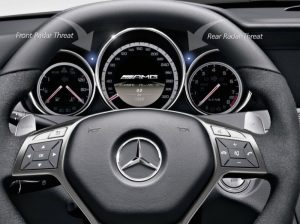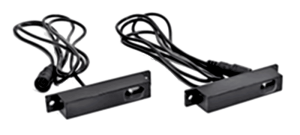The 2024 and newer Polaris RZR XP is an extremely popular side-by-side. It combines power, utility and usability to make a day on the trails exciting and enjoyable. If you want to improve your adventure, an audio system upgrade is the perfect choice. Rockford Fosgate offers audio upgrade packages specifically designed for the 2024 and later RZR XP models, ranging from a source unit and pair of speakers to a comprehensive system complete with subwoofers. Let’s take a look at the affordable Rockford Fosgate RZR24XP-STG1 audio system.
Features of the Rockford Fosgate RZR24XP-STG1
The RZR24XP-STG1 is the perfect starting point to add music to your Polaris RZR XP side-by-side. The 100-watt audio kit includes a source unit, front speakers, a dash kit, speaker enclosures, and all the wiring your installer will need.
The heart of the system is the PMX-1 media receiver. The PMX-1 features a 2.3-inch monochrome dot matrix display, allowing you to see which station you are tuned to or what track is playing. It includes an AM and FM receiver and can tune into the local weather band channels. A USB port can be used to charge your smartphone or play MP3 or WMA digital audio files from a USB memory stick. The PMX-1 features Bluetooth audio streaming capabilities, allowing you to play music from Spotify, Tidal, iHeartRadio, or Pandora on your smartphone, as well as songs from a portable media player. The radio also features a stereo auxiliary input.
In terms of design, the front of the PMX-1 features a 9H hardness glass screen, which helps maintain its classy appearance. It has an IPX6 water intrusion rating, so you don’t have to worry about it getting the occasional splash. As with all motorsport components from Rockford Fosgate, the design is Element Ready™, meaning it can handle prolonged UV exposure without fading, chalking or cracking. It can also handle intense vibrations and impacts.
The radio features a built-in four-channel amplifier, allowing you to upgrade the audio system at any time with rear moto-cans. Each amplifier channel can produce up to 25 watts of power. The radio also features front and rear preamp outputs, allowing you to add an amplifier, such as the M5-800X4 or M5-1500X5.
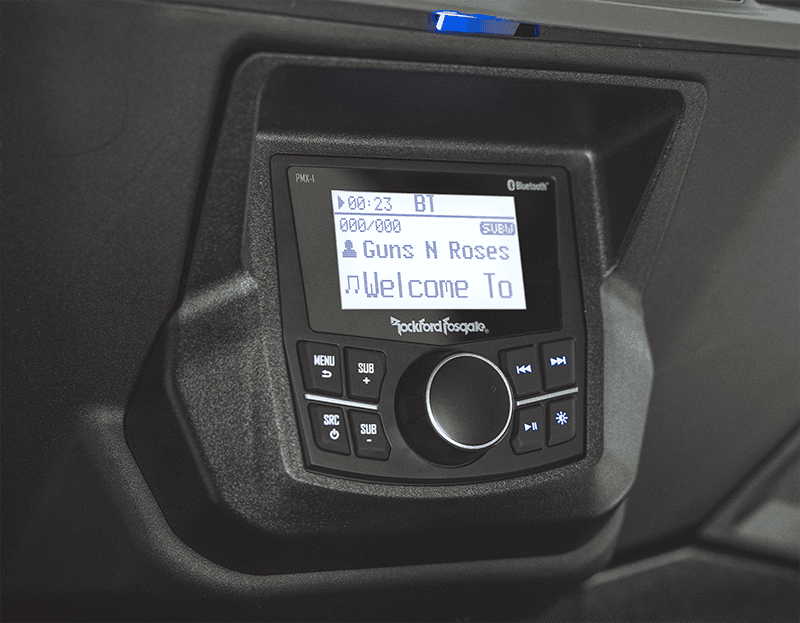
Polaris RZR XP Speaker Solution
The Stage 1 100-watt audio kit also includes a set of 6.5-inch M0-65B marine speakers. These speakers are rated to handle 65 watts of continuous power with peaks of up to 250 watts. They are built on an ASA plastic frame and grille, so you don’t have to worry about corrosion. The woofer cones are formed from a mineral-filled polypropylene that’s also UV resistant. The surrounds are made from a Santoprene synthetic rubber to ensure excellent performance for decades. Rockford Fosgate’s Vertical Attach Surround Technique (VAST) design provides these speakers with a significantly larger surface area than competing designs, making them more efficient and capable of producing greater bass output. At the center of the speaker is a 0.5-inch LCP balanced dome tweeter, designed to deliver smooth, detailed high-frequency performance.
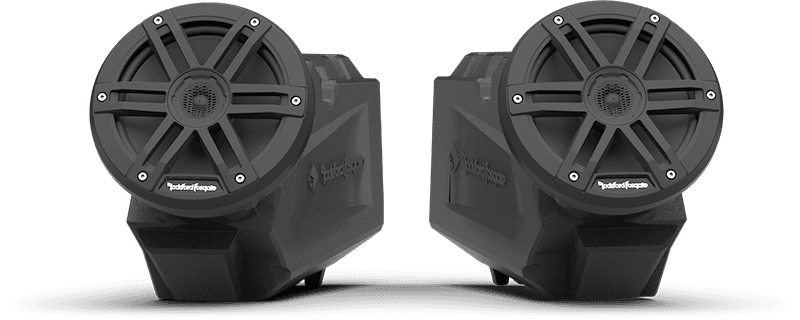
Rockford Fosgate has worked closely with Polaris to design these audio upgrade packages. As such, the kit includes a set of RZR24XP-FSE injection-molded front speaker enclosures. The enclosures bolt to the dash sides, serving as an ideal home for the speakers. Crucially, the design doesn’t occupy space in the vehicle, so legroom isn’t affected.
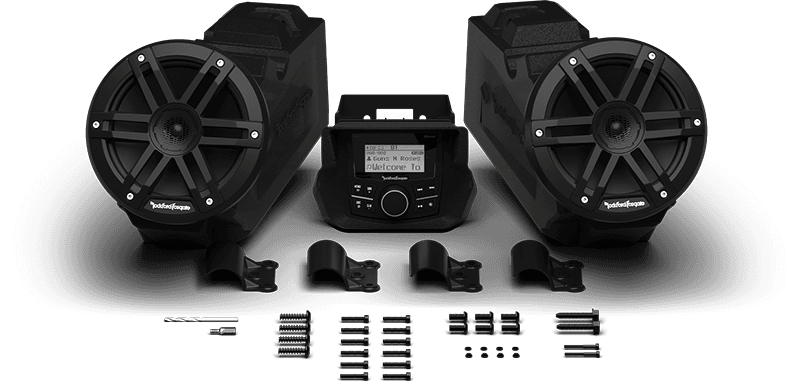
Upgrade Your Polaris RZR XP Today!
If you are craving great music to accompany your next trail adventure, visit an authorized Rockford Fosgate retailer today and inquire about the RZR24XP-STG1. You can check the online compatibility chart beforehand to ensure your side-by-side is compatible.
Visit the Rockford Fosgate website and use their dealer locator to find a shop near where you live. While online, be sure to follow Rockford Fosgate on Facebook, Instagram and YouTube to learn about all the new products they are launching in 2025 and beyond.
This article is written and produced by the team at www.BestCarAudio.com. Reproduction or use of any kind is prohibited without the express written permission of 1sixty8 media.
